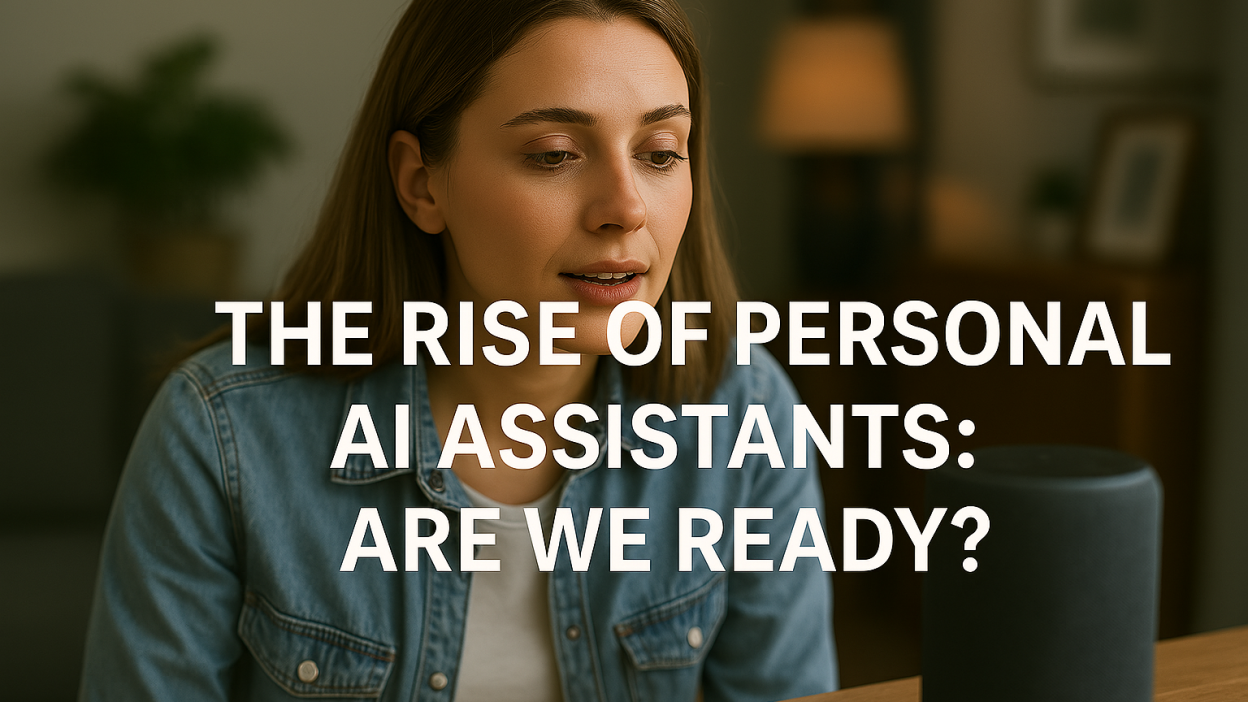In the not-so-distant past, the idea of having a virtual assistant at your beck and call felt like science fiction. Fast forward to 2025, and Personal AI Assistants (PAIAs) are not just real—they’re becoming indispensable parts of everyday life. From managing schedules and automating tasks to providing emotional support and personalized learning, AI assistants are transforming how we interact with technology. But as these digital companions grow more intelligent and integrated, one question looms large: are we truly ready?
📱 What Are Personal AI Assistants?
Personal AI Assistants go beyond the likes of Siri or Alexa. The 2025 version of a PAIA is hyper-personalized, learns from your behavior, understands your context, and adapts in real time. Thanks to advancements in natural language processing (like GPT-4 and beyond), multimodal learning, and edge computing, these assistants can now:
- Schedule and reschedule meetings autonomously
- Suggest mental wellness activities based on mood detection
- Handle customer service queries in small businesses
- Curate news and social media feeds to reduce overload
- Act as tutors, coaches, or even creative collaborators
🌍 Why They’re Rising Now
1. Post-Pandemic Tech Acceleration:
The pandemic taught the world to digitize fast. Remote work, virtual healthcare, and online learning created massive demand for intelligent tools. AI assistants naturally filled the gap.
2. AI Democratization:
No-code platforms, open-source AI models, and cloud-based tools have lowered the barrier to entry. Small businesses and individuals can now deploy their own AIs affordably.
3. Mental Load Management:
With our digital lives overflowing with notifications, to-dos, and data, AI assistants offer relief by filtering and prioritizing what truly matters.
🔐 The Privacy and Ethics Debate
While PAIAs offer convenience, they also raise major concerns:
- Data Privacy: The more personalized your assistant, the more it knows about you. Who owns this data? Can it be misused?
- Bias & Fairness: AI assistants may replicate or amplify societal biases unless trained responsibly.
- Emotional Manipulation: With affective computing, some assistants simulate empathy. But should a machine simulate human emotions?
2025’s trend? AI developers are now baking in transparency features and user-controlled data settings to give users more agency.
🔧 Features to Look For in a 2025 Personal AI Assistant
| Feature | Why It Matters |
|---|---|
| 🔄 Context-Aware Memory | Remembers past conversations and user preferences |
| 🧠 Emotional Intelligence | Adjusts responses based on user mood or tone |
| 🔒 End-to-End Encryption | Keeps conversations private and secure |
| 🌐 Multilingual Fluency | Ideal for global users and travelers |
| ⚡ Real-Time Syncing | Seamlessly updates across devices |
🚀 Leading Platforms & Tools in 2025
- OpenAI GPT-based assistants: Integrated into browsers, apps, and smart devices.
- Humane AI Pin: A wearable that uses voice, touch, and projection-based interfaces.
- Replika 2.0: Moving from companion chatbot to daily productivity assistant.
- Custom GPTs and LLMs: Built by creators and solopreneurs using OpenAI’s GPT Builder or similar tools.
🧠 The Human Side of It
Despite their smarts, AI assistants are just that—assistants. They augment our abilities but don’t replace human intuition, empathy, or creativity. The best use of these tools is to free us up for more meaningful work and relationships.
As one early adopter puts it:
“My assistant doesn’t just remind me to drink water—it reminds me to take breaks with my kids.”
📣 Final Thoughts: Are We Ready?
Technically? Yes.
Socially and ethically? We’re getting there.
The rise of Personal AI Assistants signals a turning point. They’re no longer luxury tools—they’re becoming daily necessities. The key moving forward is thoughtful adoption, transparent development, and continual reflection on how these digital minds fit into our very human world.
🧩 Pro Tip for Creators & Entrepreneurs:
Start exploring personal GPTs and plug-ins today. The AI that knows your audience best might just be the one you train yourself.





